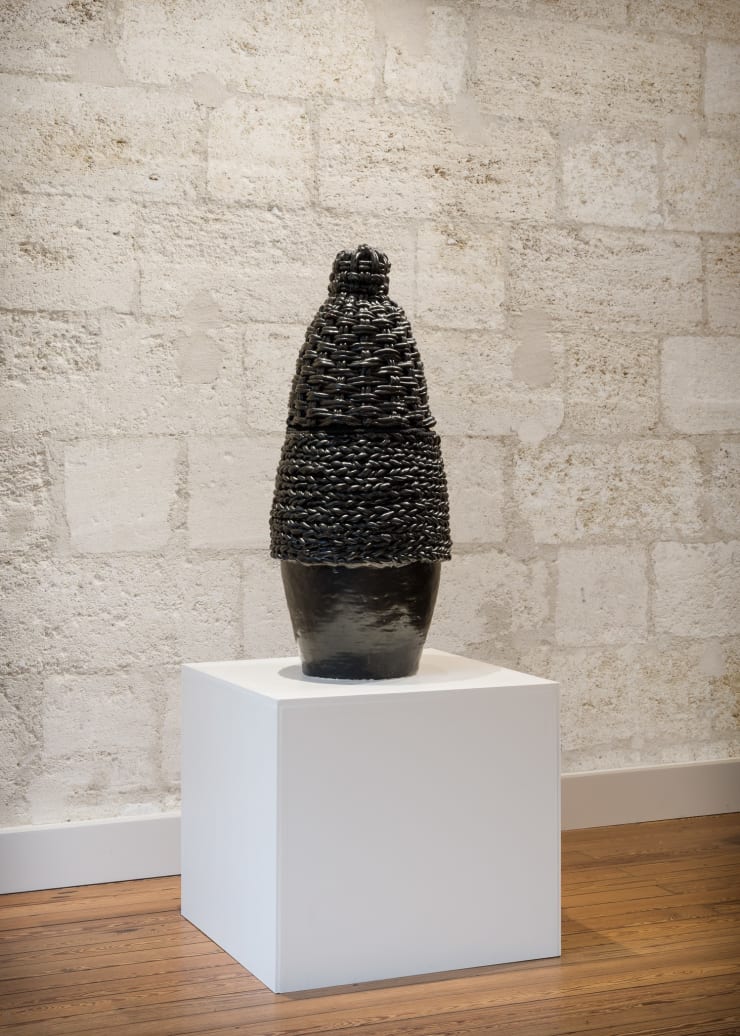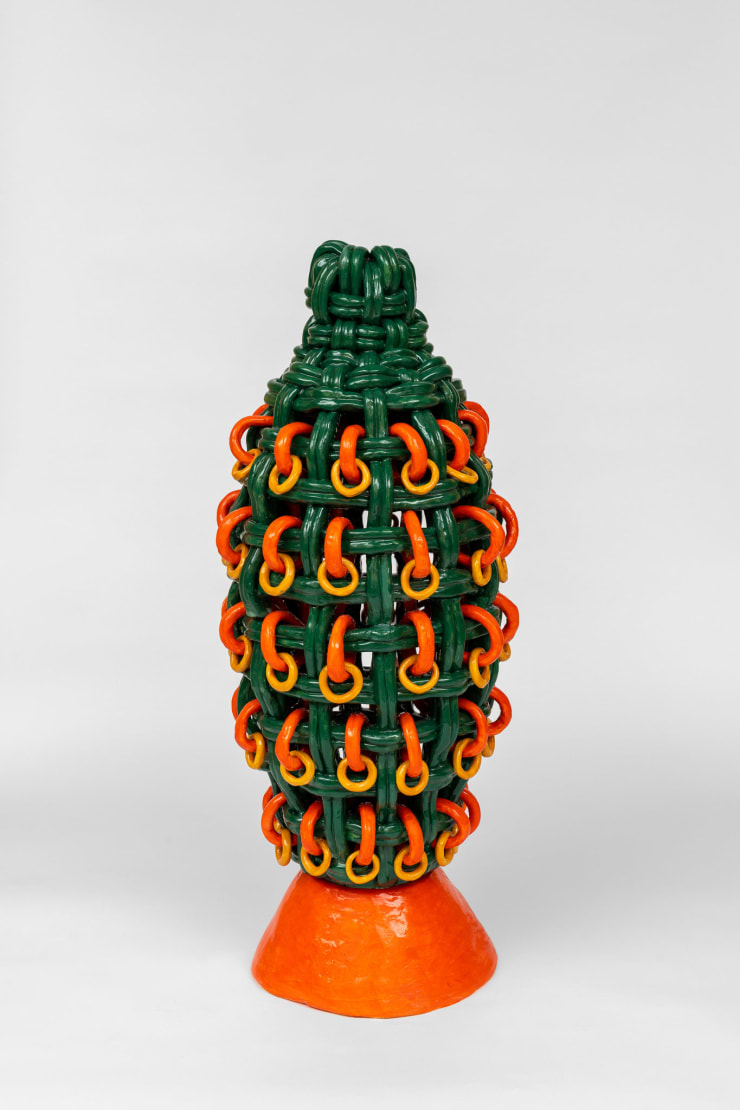“Beauty is not a luxury, rather it is a way of creating possibility in the space of enclosure, a radical act of subsistence, an embrace of our terribleness, transfiguration of the given. It is a will to adorn, a proclivity for the baroque, and the love of too much.” - Saidiya Hartman, Wayward Lives, Beautiful Experiments: Intimate Histories of Riotous Black Girls, Troublesome Women, and Queer Radicals
Galerie Revel is pleased to present ‘Human Acts: Of Pain and Possibility’, a group exhibition featuring Xanthe Somers, Samuel Nnorom and Arda Asena. The exhibition explores the interconnectedness of power, examining how systems of extraction, colonial legacies, and social inequality continue to shape our world, influencing both our surroundings and the ways we relate to one another. Through their work, the artists explore how systems of power and extraction persist in shaping both individual and collective lives, while also posing radical questions about transformation, intimacy, care and survival.
Inspired by Han Kang’s novel of the same title, which delves into the lingering effects of trauma through the experiences of victims and the bereaved, ‘Human Acts’ highlights the cycles of suffering that follow violence. Yet as instructed by cultural theorist Saidiya Hartman, is a reminder that in the face of catastrophe, beauty emerges—not as a luxury, but as a radical act of subsistence, [where acts of subsistence are those that are not only essential for survival but also transformative in their defiance of oppressive forces.] ‘Human Acts: Of Pain and Possibility’ draws from the belief that human acts, however shaped by violence and oppression, contain the potential for transfiguration. Through a diverse range of materials— clay, fibre, Ankara fabric—the artists reflect on how terror and beauty coexist, and how colour, texture and form might transform towards gestures that propose acts of collective healing, resistance and renewal.
Somers’s work interrogates practices defined as ‘women’s work’ in a post-colonial context, with a particular focus on Zimbabwe, her country of birth. Through the metaphor of weaving, while working primarily with clay, Somers reflects on how materiality itself becomes a visual language of history and survival. Somers's ‘The Weaver Weeps’ and ‘Threadbare’ are intricately crafted, tightly bound vessels rendered in black, resembling the woven baskets that inspire her work. Similarly, Nnorom’s textile mural sculptures, made from the famous Ankara fabric ubiquitous in West African countries, use the shape of "bubbles" tightly held together to evoke the invisible ties that bind human experience through networks of labour, identity and belonging. The works 'Unbothered,' 'Pottage,' and 'Locating What Matters' are vibrant, colorful works that are both fluid and precise, reflecting the artist's practice founded on hybridity. ‘Unbothered’, the larger of the three works, explores new meanings in older processes by introducing fishing nets as a symbol of experimentation and detachment from the pressures of daily life. These nets, evoking the idea of charting new waters, offer a fresh perspective on how being unburdened, as one moves through banal activities of daily living, might lead to joy. The nets are also a metaphor for connection— a kind of connective tissue for new ways of meaning-making and relationality.
Asena, whose work is being presented at Galerie Revel for the first time, explores modes of resistance that attend to notions of secretive eroticism, often employed as methods of survival by queer people in the face of social and cultural violence. Asena’s use of the Jacquard technique in weaving emphasizes the precision and care inherent in the process of weaving, where each thread is carefully controlled, much like the labour of care itself — meticulous, intentional, and deeply interwoven with histories of resistance and survival. In his practice, which spans photography, painting, sculpture and textile, he explores the potential of the weaving method to translate and transform images, questioning the collapse of temporalities and creating queer, abstract worlds. ‘Beyond Containment’ and ‘Caressing Tender Cells’ embody the artist’s interest in the multiplicity of abstraction, with images appearing as layered surfaces that hold a multitude of narratives.
Together, these artists use materiality as both a mnemonic device and a tool for transformation, engaging with the practices of mending and assemblage in ways that are at once personal and political. In acknowledging interwoven legacies, ‘Human Acts: Of Pain and Possibility’ proposes a space for both reflection and action— through a confrontation of past injustices and an imagination of the ways in which we might move toward possibility.

















